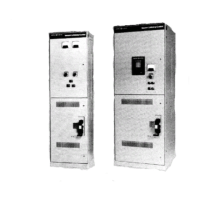CR194 Two-High Vacuum Limitamp@ Control
Torque Recommendations For Electrical
salt water, etc.).
Power Connections
3. Mechanical wear and fatigue on all moving parts.
joints and connections.
in these instructions for obtaining
access to all sections of the controller, including
Also, refer to GEH-
of the high-
Preventive Maintenance Guide
voltage contactor.
The following are some specific recommendations:
WARNING:
Before performing any inspection,
maintenance or servicing on the equipment all
power must be removed from the equipment and
all load-connected rotating equipment must have
Maximum trouble free service from vacuum
Limitamp@ controllers requires periodic preventive
maintenance, inspection and cleaning. A definite
2.
schedule should be maintained for each, with the fre-
quency depending on the operating conditions.
When doing inspections, five basic categories of dete-
3.
riorating influences should be kept in mind:
4.
1. The effect of foreign material (i.e. dirt and dust
from the environment such as wood fibers, coal
dust, cement, lamp black, lint, etc.).
2. The effect of chemicals in the atmosphere
(i.e. sulfur dioxide, chlorine, some hydrocarbons,
5.
6.
7.
Check for cleanliness generally, but particularly
for accumulation of any foreign material on insu-
lators. Voltage failures can result from tracking
across insulation surfaces where they are dirty. The
primary circuit insulation on the controller may be
checked phase to phase and phase to ground us-
ing a 2500 volt megger.
Check for abrasive material accumulated in the
isolation mechanism and mechanical interlock
bearing and cam surfaces.
Check for buildup of dust and dirt which would
reduce any air or surface voltage clearances.
Excessive heat can cause wire and cable insulation
breakdown. Therefore, check for any evidence of
melting, discoloring, deterioration, etc. of
wire and cable.
The isolation mechanism has a life expectancy of
approximately 6000 operations. If the application
is such that the mechanism is operated more than
twice each day, then the mechanism should be
checked at the end of each 1000 operations. Oth-
erwise a yearly inspection is recommended.
Periodic checks of dimensions of the isolation
mechanism and mechanical interlocks is strongly
recommended. Followthe sections in these in-
structions titled Mechanical Operation Check and
Isolation Mechanism.
When any part of the isolation mechanism or me-
chanical interlocking is replaced, all dimensions
and checking procedures referred to in Step 6
above should be followed to be sure the system is
normal working order.
30

